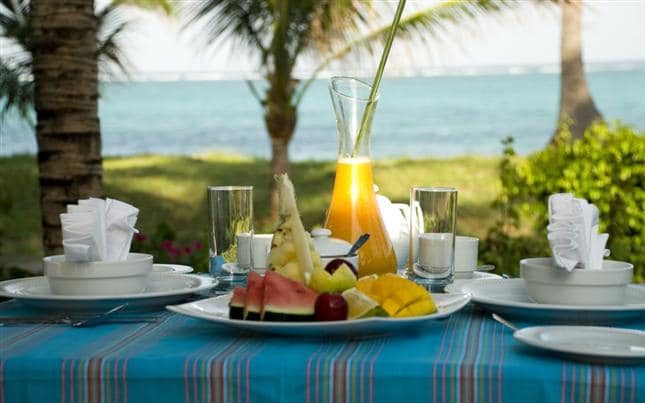
TOUR:ZANZIBAR
Zanzibar! How exotic that name is! Spices, beaches and dhows come to mind. All still valid today. Our tours of Zanzibar are focused on the capital city, Stone Town, a UNESCO World Heritage Site, and the glorious beaches of this exotic island. That doesn’t exclude visits to a spice farm to learn about the extraordinary variety of spices produced there, nor lovely sunset cruises in dhows but it does mean that the prime interest is that unique town and those lovely beaches. Stone Town’s narrow streets, its carved doors, its palaces and its museums.
As Zanzibar can be used as a destination for a week’s vacation at the beach, or as a 3 or 4 night finale to a safari in Tanzania or Kenya, we would be happy to structure whatever suits our guests the best. In Stone Town, we primarily use one of the most unusual boutique hotels that we have ever experienced. The Jafferjy House manages to convey the unique afro-arabian ambiance of Zanzibar, whilst providing the most comfortable rooms and suites imaginable.
Owned by an eminent international photographer, this establishment allows an evocative crustacean dinner on the roof of the hotel, with its view over the town, which will forever remain in your memory.
For the beach experience we recommend two establishments. The Palms, German-owned, is only a 6 cottage establishment on the eastern side of the island, and is in a style that befits the tropical surroundings. The large and comfortable suites, each with their own outside plunge pool, are located close to the main pool, the beach and the dining facilities. The service at The Palms is superb. The meals are exceptionally good, using excellent local produce. The other establishment is The Residence, Singaporean-owned, on the southwest side of the Island, which has 66 suites, all with their own plunge pools. Excellent dining, with a strong French influence, a wonderful infinity pool walled with blue glass, and bicycles for every guest to get around the property, make it a sophisticated establishment.
We can also arrange for you to see the unique indigenous monkey, the Red Colobus, in its natural habitat, a mangrove swamp reserve and a restaurant on a rock in the sea.
You won’t be bored!


Please contact us if you’d like more information about this
COMMENDABLE TOUR to ZANZIBAR.




Main Office, 214 Sea Island Dr,
Georgetown, South Carolina, USA, 29440-7260
Prime Number: + 1 843-548-4213
Europe Phone: +33 (0)6 52 49 99 22
Email: susan@commendablerentals.com
To find out more about our tours or to book a Commendable tour.
See our Commendable Destinations

 Seyyid Said bin Sultan, the 19th-century sultan of Oman, made Zanzibar his home and the capital of the Omani Empire in the early 1800’s He built magnificent palaces in and outside Stone Town and instilled Muslim traditions, while the clove, ivory, and slave trades made Zanzibar rich.
Seyyid Said bin Sultan, the 19th-century sultan of Oman, made Zanzibar his home and the capital of the Omani Empire in the early 1800’s He built magnificent palaces in and outside Stone Town and instilled Muslim traditions, while the clove, ivory, and slave trades made Zanzibar rich. Stone Town, as the Capital city and also an Unesco World Heritage site, is definitely worth a visit. Its architecture dates back to before middle ages (it s earliest visitors came in 150 AD), when its Swahili civilisation merged with visiting traders and pirates from India, Arabia, Persia and China, criss-crossing the Indian Ocean, bringing metal tools, weapons, and jewellery, and departing with heart-breaking quantities of ivory tusks, tortoise shell, and captured human cargo to be sold as slaves. Zanzibar’s name is derived from the Arab Zinj el Barr, or “Land of Black People”. The African people of the coast intermixed with the visitors creating a distinct Swahili society of language arts, and culture. Swahili is today’s official language.
Stone Town, as the Capital city and also an Unesco World Heritage site, is definitely worth a visit. Its architecture dates back to before middle ages (it s earliest visitors came in 150 AD), when its Swahili civilisation merged with visiting traders and pirates from India, Arabia, Persia and China, criss-crossing the Indian Ocean, bringing metal tools, weapons, and jewellery, and departing with heart-breaking quantities of ivory tusks, tortoise shell, and captured human cargo to be sold as slaves. Zanzibar’s name is derived from the Arab Zinj el Barr, or “Land of Black People”. The African people of the coast intermixed with the visitors creating a distinct Swahili society of language arts, and culture. Swahili is today’s official language.
 On arrival at Breezes we were offered a fresh coconut to sip with a straw, and were led to see the beach, which is beautiful indeed, but so was the surprise that awaited us. Under a palm frond canopied table set for lunch just some meters from the sea, we sat with our feet in the sand and feasted on fresh grilled fish and lobster and perfectly chilled white wine.
On arrival at Breezes we were offered a fresh coconut to sip with a straw, and were led to see the beach, which is beautiful indeed, but so was the surprise that awaited us. Under a palm frond canopied table set for lunch just some meters from the sea, we sat with our feet in the sand and feasted on fresh grilled fish and lobster and perfectly chilled white wine.